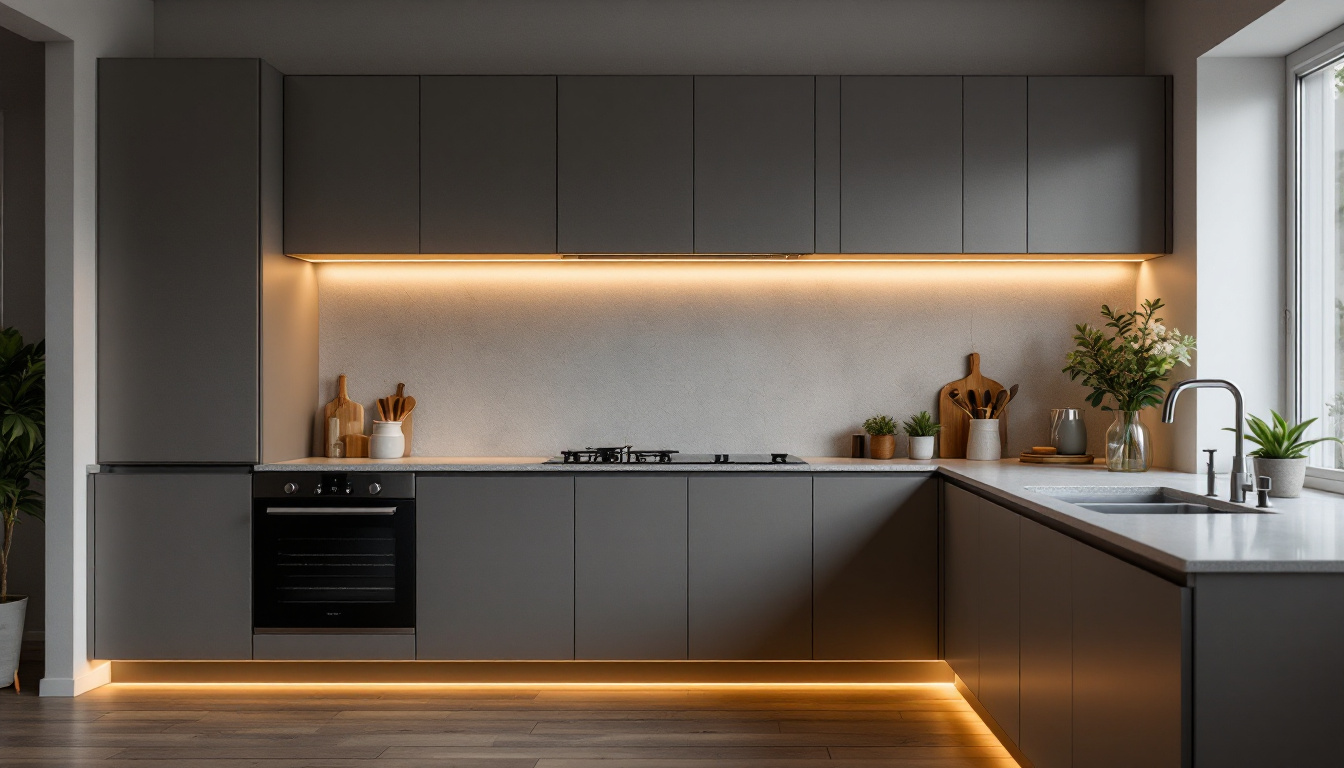

Recessed can lights have become a staple in modern lighting design, offering a sleek and unobtrusive way to illuminate spaces. However, as technology advances and design preferences evolve, the need for replacing these fixtures arises. For lighting contractors, understanding the nuances of replacing recessed can lights is essential for delivering quality service to clients. This article provides expert advice on the best practices, tools, and considerations for successfully replacing recessed can lights.
Before diving into the replacement process, it is crucial to have a comprehensive understanding of recessed can lights. These fixtures are installed into the ceiling, creating a clean look while providing effective lighting. They are available in various sizes and styles, making them suitable for different applications, from residential homes to commercial spaces. The versatility of recessed can lights allows them to blend seamlessly with various interior designs, from modern minimalist to classic traditional, enhancing the overall aesthetic appeal of a room.
Typically, recessed can lights consist of three main components: the housing, trim, and bulb. The housing is the metal can that holds the bulb and is mounted within the ceiling. The trim is the visible part that frames the opening, while the bulb provides the actual illumination. Familiarity with these components will aid contractors in selecting the right replacements. Additionally, understanding the installation requirements, such as the necessary clearance and insulation compatibility, is essential for ensuring optimal performance and safety.
There are several types of recessed can lights, each designed for specific applications and aesthetics. Standard incandescent can lights are common in residential settings, while LED options are gaining popularity due to their energy efficiency and longevity. Additionally, adjustable and gimbal recessed lights allow for directional lighting, making them ideal for highlighting artwork or architectural features. Some models even come with smart technology, enabling users to control brightness and color temperature via mobile apps or voice commands, adding a layer of convenience and customization.
Understanding the different types of recessed can lights will help contractors recommend the best options to clients based on their needs and preferences. Furthermore, being knowledgeable about the latest advancements in lighting technology can set a contractor apart in a competitive market. For instance, the emergence of tunable white LEDs allows homeowners to adjust the color temperature throughout the day, mimicking natural daylight and enhancing mood and productivity. This adaptability not only caters to aesthetic desires but also promotes well-being, making it a valuable selling point for contractors to emphasize in their consultations.
Not all recessed can lights require immediate replacement. However, several indicators can signal the need for an upgrade. Flickering lights, uneven illumination, or physical damage to the housing or trim are all signs that replacement may be necessary. Additionally, if the lighting no longer meets the client’s needs or preferences, it may be time to consider a replacement. For instance, a homeowner who has recently renovated their space may find that the original lighting no longer complements the new decor or layout, prompting a desire for a more cohesive aesthetic.
Contractors should also consider the age of the existing fixtures. Older incandescent lights can consume more energy and may not provide the desired level of brightness compared to newer LED options. By assessing the functionality and efficiency of the current lighting, contractors can provide informed recommendations to clients. Furthermore, it’s important to evaluate the overall design of the lighting scheme; outdated fixtures might not only be inefficient but could also detract from the overall ambiance of the space. Upgrading to modern designs can enhance both form and function, creating a more inviting environment.
Energy efficiency is a crucial factor in modern lighting design. Replacing outdated incandescent can lights with LED options can significantly reduce energy consumption and lower utility bills for clients. LEDs have a longer lifespan, which means fewer replacements and less waste over time. This longevity not only benefits the environment but also provides a more sustainable solution for clients looking to minimize their carbon footprint. Moreover, many utility companies offer rebates for upgrading to energy-efficient lighting, which can further incentivize clients to make the switch.
When evaluating energy efficiency, contractors should also consider the color temperature of the bulbs. Warmer tones may be preferable in residential settings, while cooler tones can enhance productivity in commercial spaces. Understanding these nuances will allow contractors to tailor their recommendations to meet client expectations. Additionally, it’s worth noting that the placement and angle of recessed lighting can greatly affect how light is distributed throughout a room. Properly positioned fixtures can maximize efficiency and create a more balanced illumination, ensuring that every corner of a space is well-lit without unnecessary energy expenditure. This strategic approach not only enhances the visual appeal of a room but also contributes to a more comfortable and functional environment for its occupants.
proper preparation is essential before embarking on the replacement of recessed can lights. This includes gathering the necessary tools and materials, as well as ensuring safety measures are in place. Contractors should always turn off the power to the circuit before beginning any work to prevent electrical hazards.
Common tools required for replacing recessed can lights include a screwdriver, wire stripper, voltage tester, and a ladder for accessing high ceilings. Having these tools on hand will streamline the process and minimize delays. Additionally, contractors should ensure they have the correct replacement fixtures, trims, and bulbs ready for installation.
Safety should always be a top priority when working with electrical fixtures. Contractors must adhere to local codes and regulations, ensuring that all work is compliant. It is also advisable to wear appropriate personal protective equipment, such as gloves and safety glasses, to mitigate risks during the replacement process.
Furthermore, using a voltage tester to confirm that the power is off before touching any wiring is crucial. This simple step can prevent accidents and ensure a safe working environment. By prioritizing safety, contractors can protect themselves and their clients throughout the project.
Once preparations are complete, contractors can begin the replacement process. This typically involves removing the existing fixture, installing the new one, and ensuring proper connections are made. Below is a step-by-step guide to facilitate a smooth replacement.
Start by carefully removing the trim from the existing recessed can light. This may require gently pulling or twisting, depending on the design. Once the trim is removed, the housing will be accessible. Disconnect the wiring by unscrewing the wire nuts and separating the wires. It is essential to take note of how the wires are connected for reference during the installation of the new fixture.
After disconnecting the wiring, carefully pull the housing out of the ceiling. If the housing is secured with clips or screws, these will need to be removed as well. Ensure that the area is clear of debris before proceeding to the next step.
With the old fixture removed, it is time to install the new recessed can light. Begin by positioning the new housing into the ceiling opening. If the housing has adjustable clips, ensure they are properly secured to hold the fixture in place. Once the housing is secure, reconnect the wiring according to the notes taken during the removal process.
After making the connections, use wire nuts to secure the wires together, ensuring that there are no exposed wires. It is crucial to double-check that all connections are tight and secure to prevent any electrical issues.
Once the housing is installed and wired correctly, the final step is to attach the trim. Depending on the design, this may involve snapping the trim into place or securing it with screws. Ensure that the trim is flush with the ceiling for a polished look.
After the trim is in place, restore power to the circuit and test the new fixture. Check for proper operation and ensure that the light is functioning as expected. If any issues arise, double-check the wiring connections to troubleshoot potential problems.
After successfully replacing recessed can lights, contractors should take the time to discuss maintenance and care with their clients. Providing guidance on how to maintain the new fixtures will help ensure longevity and optimal performance.
Encouraging clients to regularly clean the fixtures and replace bulbs as needed can prevent issues down the line. Additionally, discussing the benefits of energy-efficient lighting can reinforce the value of the replacement and foster a positive client relationship.
effective communication with clients is essential throughout the replacement process. Keeping clients informed about the steps being taken, potential challenges, and the benefits of the new fixtures can enhance their overall experience. Providing a detailed explanation of the features and advantages of the new recessed can lights will help clients appreciate their investment.
Furthermore, contractors should be open to answering any questions clients may have. This transparency builds trust and can lead to repeat business and referrals in the future.
Replacing recessed can lights is a task that requires careful planning, knowledge, and execution. By understanding the types of fixtures available, assessing the need for replacement, and following a systematic approach to installation, lighting contractors can deliver exceptional service to their clients.
Prioritizing safety, efficiency, and communication will not only enhance the quality of the work but also strengthen client relationships. As the lighting industry continues to evolve, staying informed about the latest trends and technologies will ensure that contractors remain competitive and successful in their field.
By following the expert advice outlined in this article, lighting contractors can confidently tackle the challenge of replacing recessed can lights, ultimately providing clients with improved lighting solutions that meet their needs and preferences.
Ready to take your lighting projects to the next level? At LumenWholesale, we provide lighting contractors with the finest spec-grade lighting products at unbeatable wholesale prices. Say goodbye to local distributor markups and hello to a vast selection of reliable, high-performance lighting that meets the highest industry standards. With free shipping on bulk orders, you can stock up on premium lighting solutions without any hidden fees. Elevate your service offerings and delight your clients with the quality, affordability, and convenience of Wholesale Lighting at the Best Value. Join the LumenWholesale family today and experience the difference.

Discover how low voltage under cabinet lights can transform your lighting projects and help you secure more contracts.

Discover the essentials of networked controlled lighting systems and their impact on modern lighting projects.

Discover the transformative impact of HID lights on the lighting industry.

Discover essential tips from a seasoned lighting contractor on selecting the perfect LED light fixtures.
Get notified when NEW deals are released.
Optimize your budget with wholesale discounts.
Only top-quality, specification-grade lighting products.
No additional costs at checkout - what you see is what you pay.
We understand the unique needs of contractors.